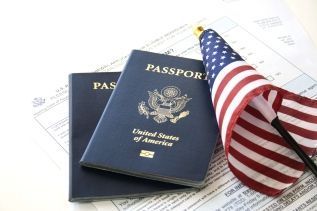In today’s interconnected world, the United States continues to attract individuals from various backgrounds who are seeking career advancement, educational opportunities, entrepreneurial ventures, and more.
However, the complexities of U.S. immigration law, especially when it comes to securing visa sponsorship, can be overwhelming. This guide aims to simplify the process and explore the different pathways available for those aspiring to live and work in the United States through visa sponsorship.
Understanding Visa Sponsorship:
Visa sponsorship involves a U.S.-based employer or individual petitioning the government to allow a foreign national to enter and reside in the country for a specific purpose, such as employment, education, family reunification, or investment.
This sponsorship is a crucial step in the immigration process, as many visas require it to obtain legal status in the United States.
Types of Visa Sponsorship Opportunities:
- Employment-Based Visas:
- H-1B Visa: Designed for professionals in specialized fields such as technology, engineering, healthcare, and finance, this visa requires sponsorship from a U.S. employer.
- L-1 Visa: For intracompany transferees, this visa allows multinational companies to transfer employees from foreign offices to the U.S. It requires sponsorship from a qualifying U.S.-based employer.
- O-1 Visa: Reserved for individuals with extraordinary abilities in fields like science, arts, education, business, or athletics. It doesn’t require a job offer but demands substantial proof of exceptional talent.
- EB-3 Visa: This visa is for skilled workers, professionals, and workers with less specialized skills. Sponsorship from a U.S. employer is necessary, and the employer must demonstrate that there are no qualified workers available domestically.
- Investor Visas:
- EB-5 Visa: Aimed at investors willing to make a substantial capital investment in a new commercial enterprise that creates jobs in the U.S. This visa provides a pathway to permanent residency for investors and their immediate family members.
- Family-Based Immigration:
- Immediate Relative Visas: U.S. citizens and lawful permanent residents (green card holders) can sponsor close family members, such as spouses, children, and parents, with no annual numerical limits.
- Family Preference Visas: These visas are for more distant relatives, such as siblings and adult children of U.S. citizens and green card holders. They are subject to annual caps and often involve long waiting periods.
- Diversity Visa Lottery:
- The Diversity Immigrant Visa Program, or green card lottery, randomly selects individuals from countries with low rates of immigration to the U.S. Winners can apply for a green card and eventually obtain permanent residency.
- Exchange Programs:
- J-1 Visa: For exchange visitors participating in programs that promote cultural exchange, education, or professional training, allowing temporary residence in the U.S. during the program duration.
- Extraordinary Ability Visas:
- O-1 Visa: As mentioned earlier, this visa is for individuals with extraordinary abilities in their fields. It is prestigious and does not require a specific job offer but requires significant evidence of exceptional talent.
- Entrepreneurial Pathways:
- Entrepreneurs can explore avenues to start their own businesses in the U.S. and apply for visas based on their investments, such as the E-2 Treaty Investor Visa or the EB-5 Immigrant Investor Visa, depending on the business scale.
Navigating the Visa Application Process:
Once you identify the most suitable visa category, navigating the application process is critical. Consider the following steps:
- Research and Consultation: Conduct thorough research on the chosen visa category, including eligibility requirements, necessary documentation, and processing times. Consulting with immigration attorneys or experts in U.S. immigration law can provide valuable guidance.
- Secure Sponsorship: If your visa category requires employer sponsorship, start networking and applying for jobs with U.S.-based companies willing to sponsor foreign workers. Highlight your skills, qualifications, and relevant experience to attract potential employers.
- Gather Documentation: Collect all necessary documentation, such as educational credentials, employment records, financial statements, and proof of eligibility. Ensure accuracy and proper translation of documents if required.
- Submit Application: Accurately complete and submit visa application forms along with the required documentation to the appropriate U.S. government agency, such as USCIS or DOS. Pay the applicable fees and any additional costs.
- Attend Interviews: Prepare for interviews or appointments as part of the visa application process. Be ready to provide additional information or clarification as requested by immigration authorities.
- Await Decision: After submitting your application and attending required interviews, wait for a decision on your visa petition. Processing times vary, so stay informed about your application status and follow up if needed.
Conclusion:
Securing visa sponsorship for the United States can be a challenging process, but with careful planning, persistence, and the right resources, it is achievable.
Whether seeking employment, educational opportunities, family reunification, or entrepreneurial ventures, understanding the available visa pathways and effectively navigating the application process are essential steps toward realizing your goals of living and working in the United States.
Stay informed, seek professional guidance when necessary, and maintain patience as you pursue legal status in the land of opportunity.
